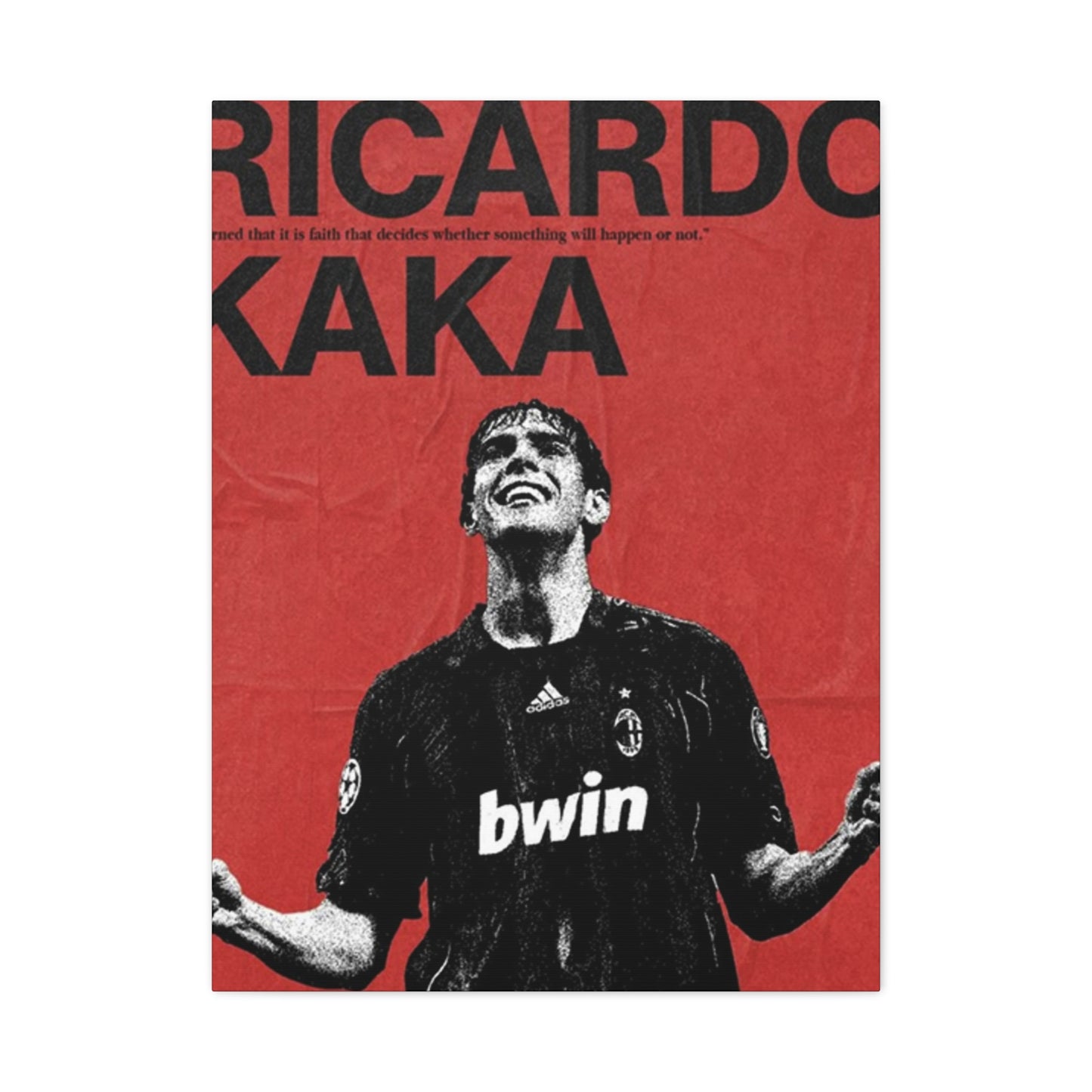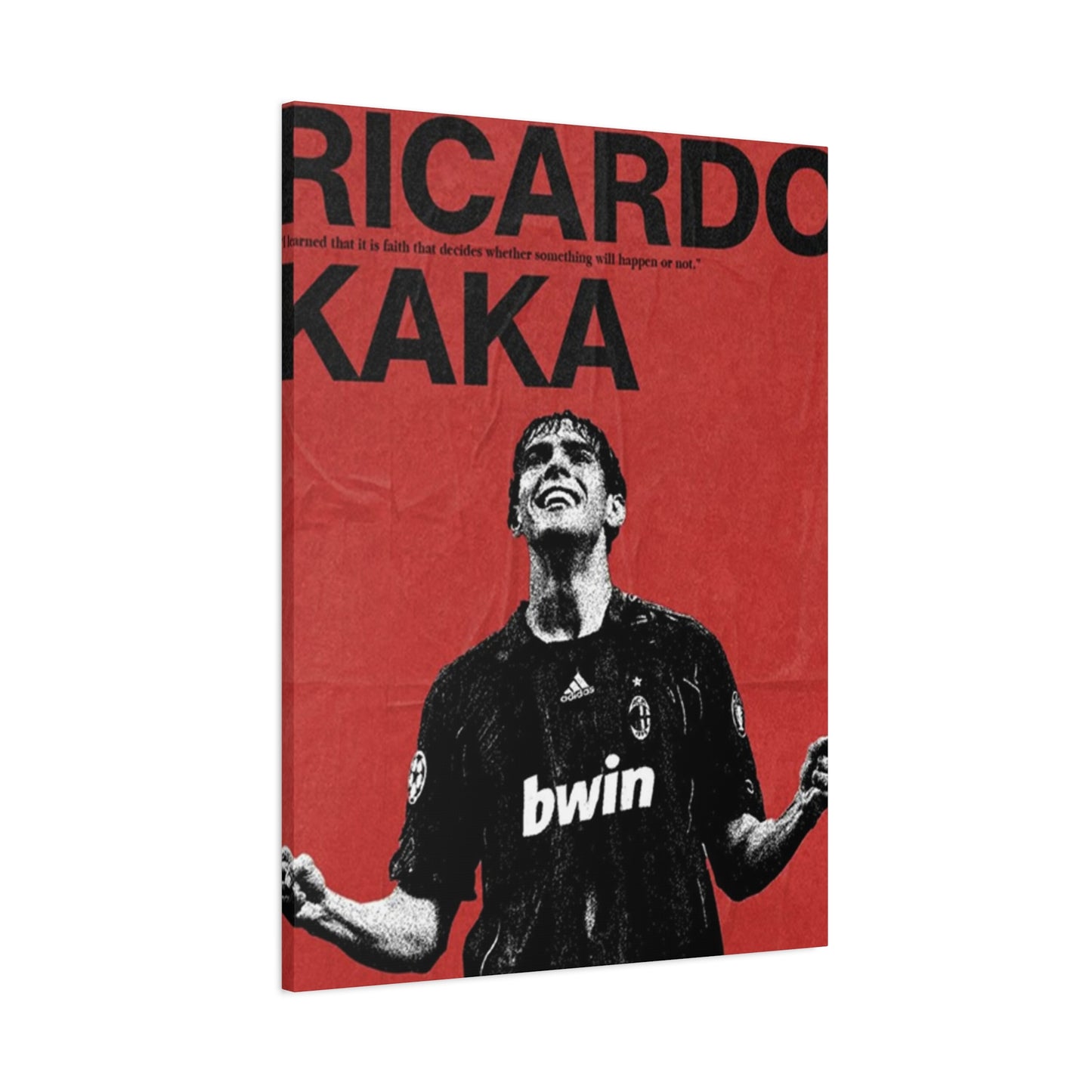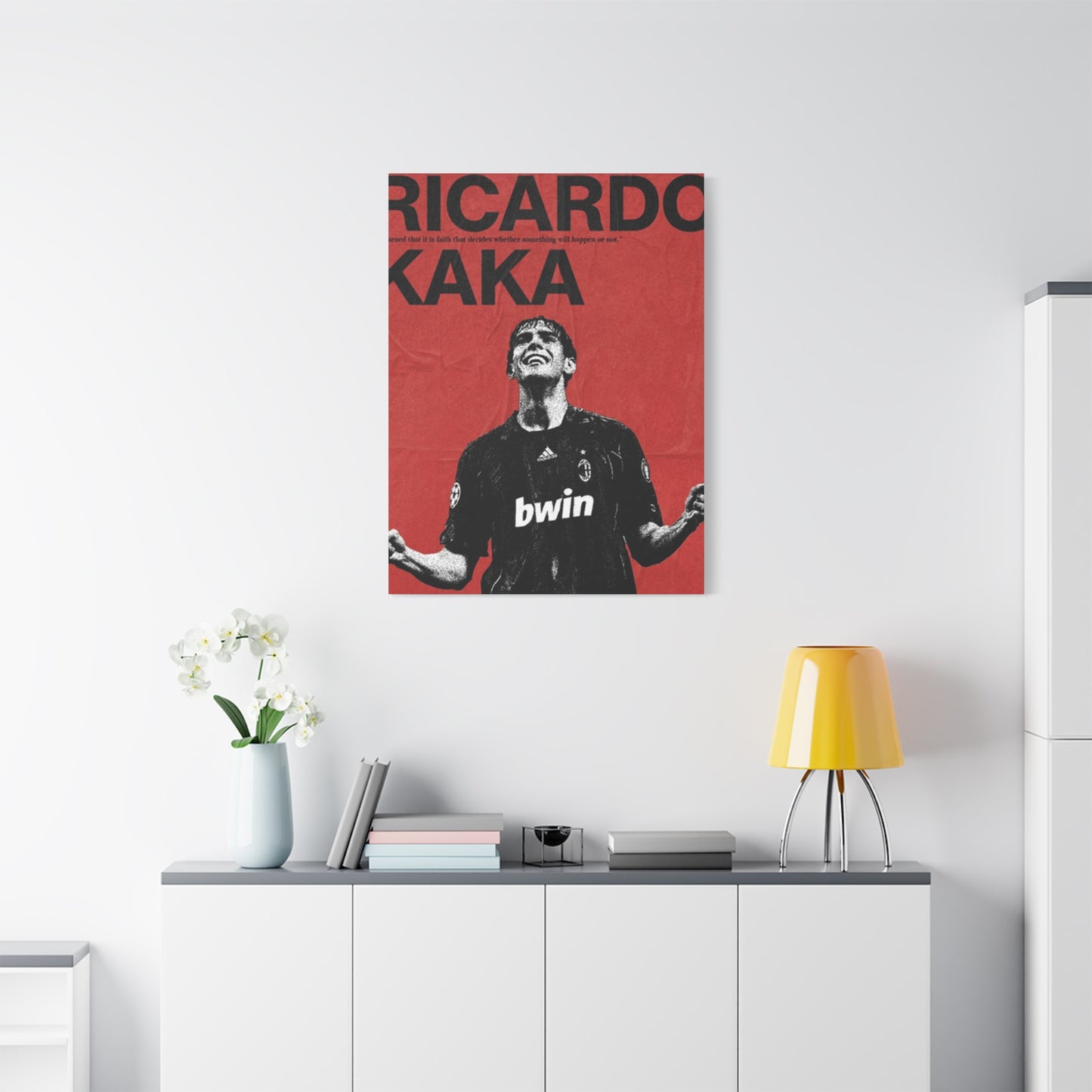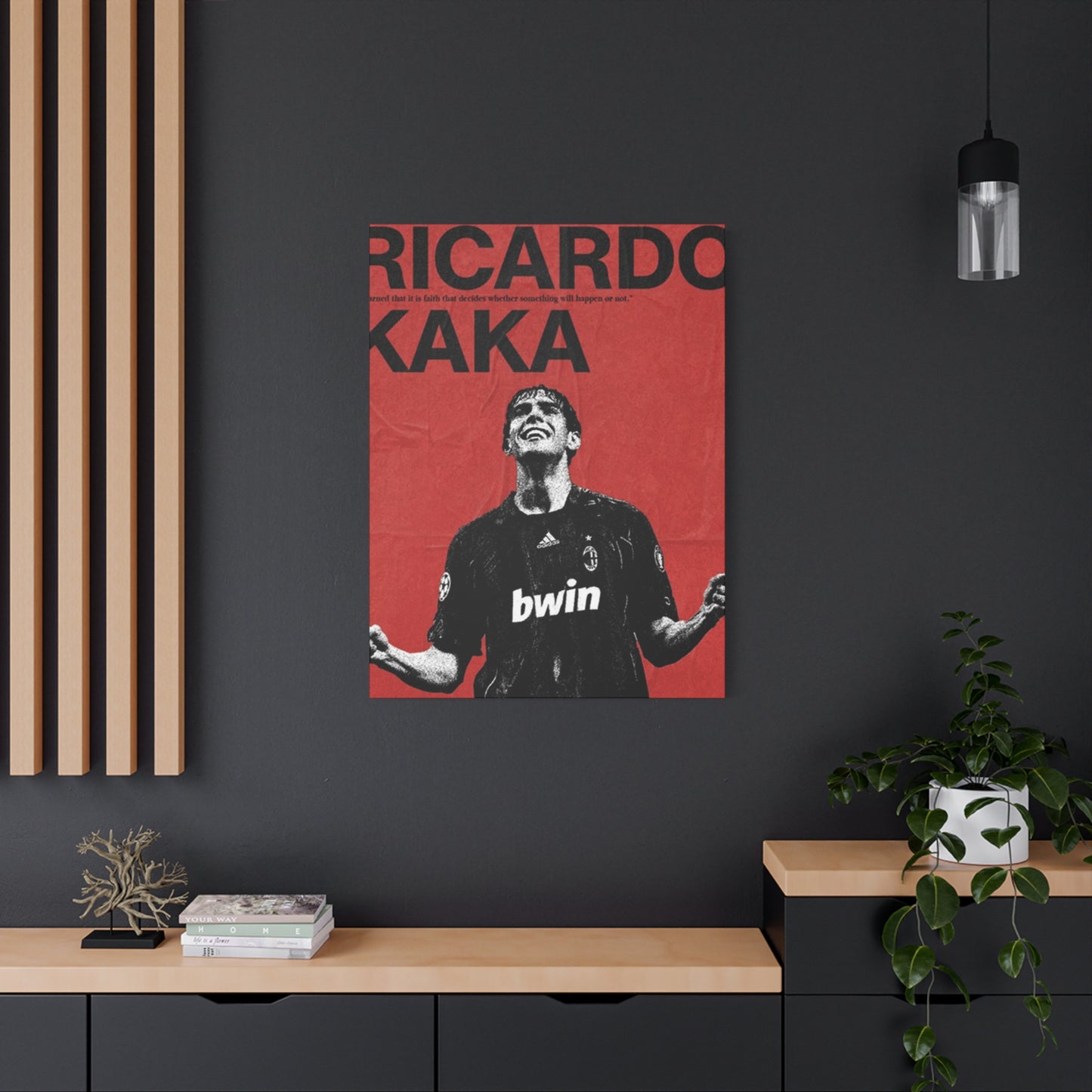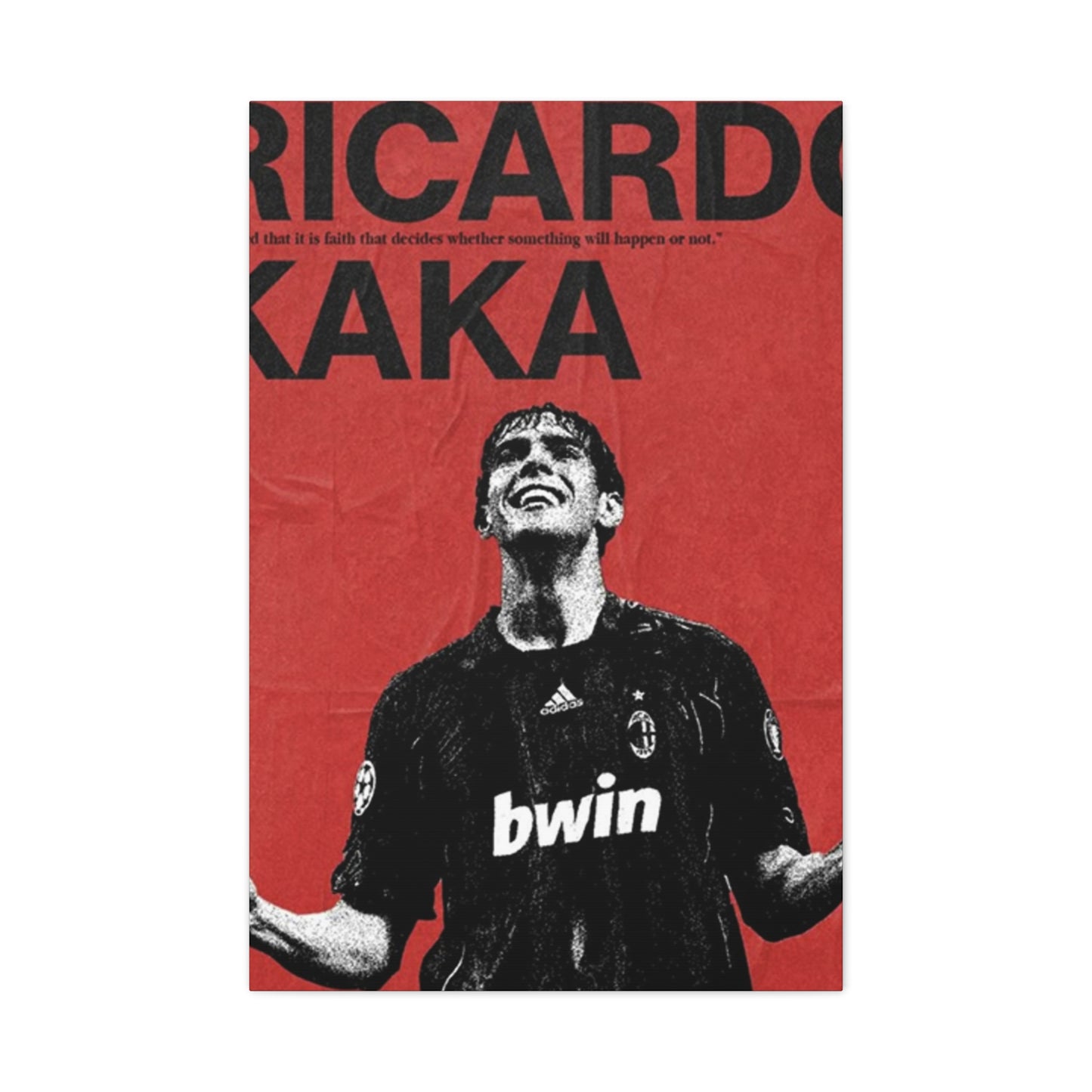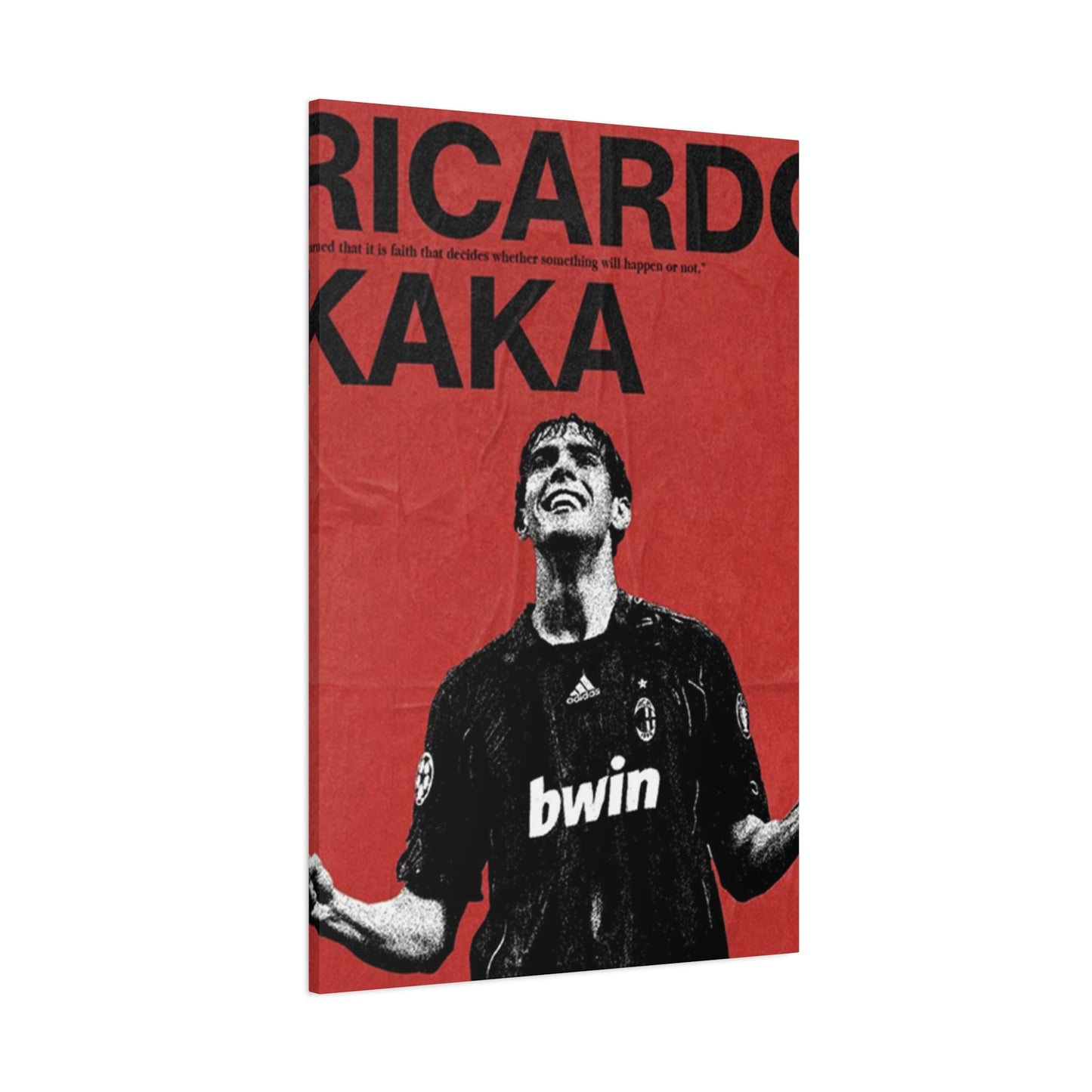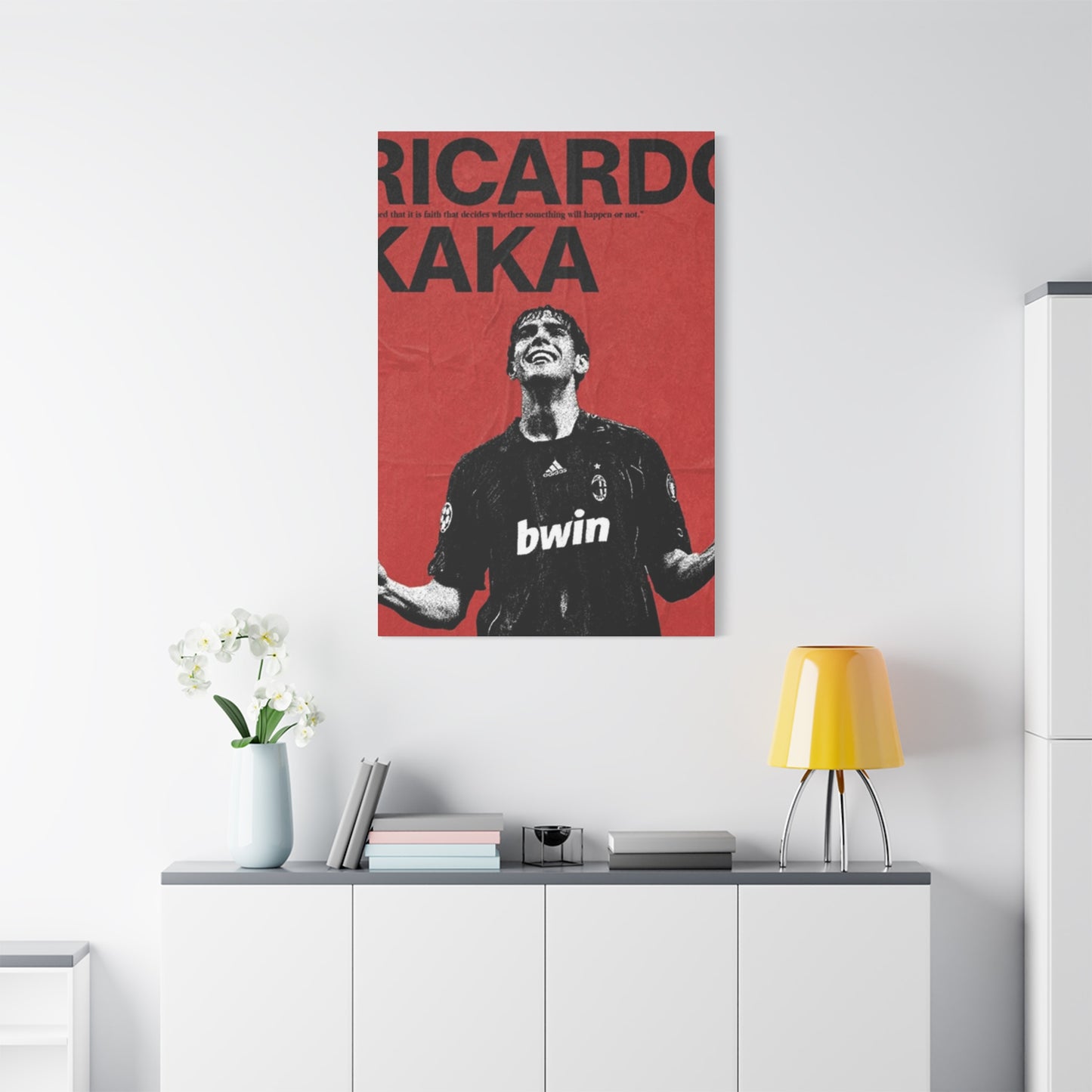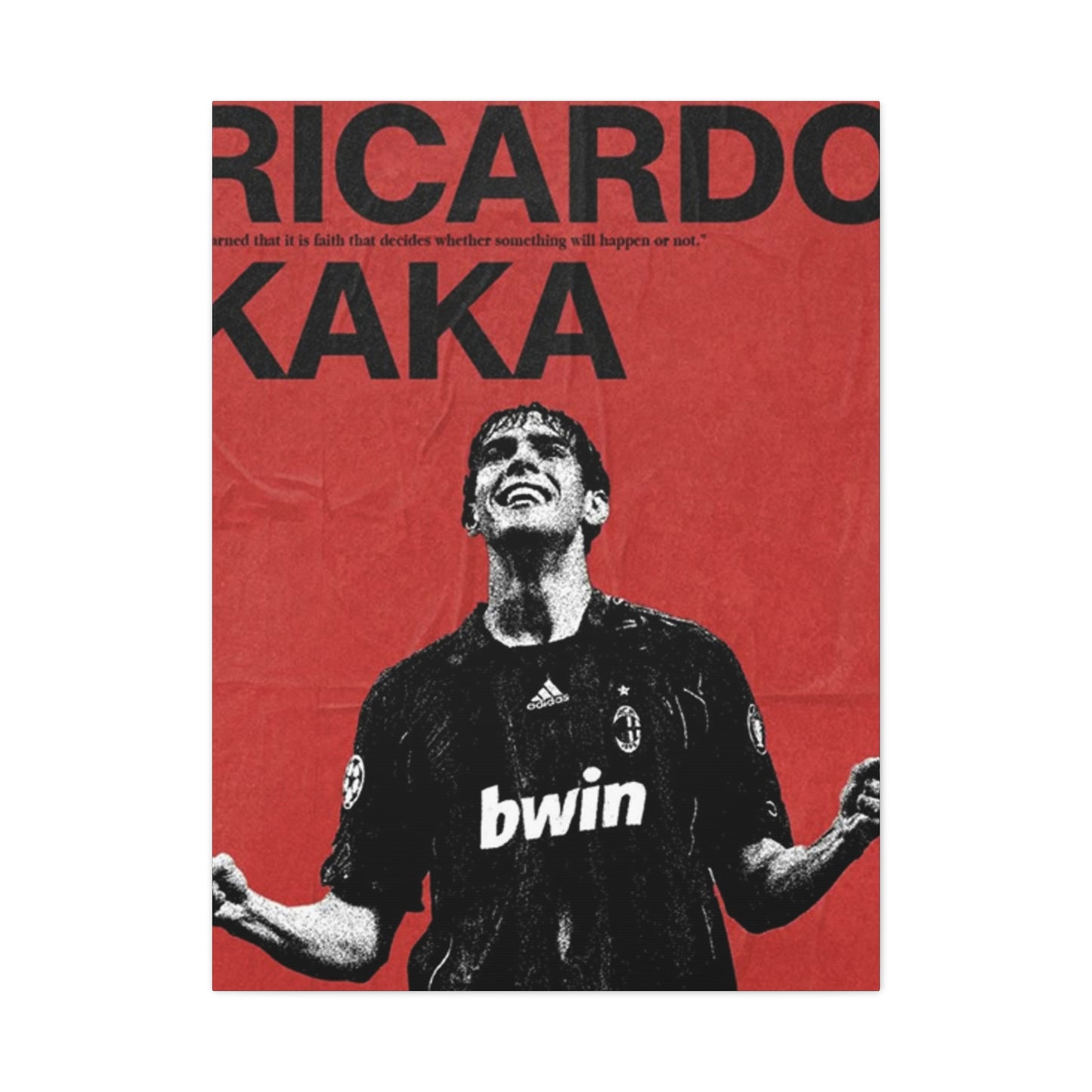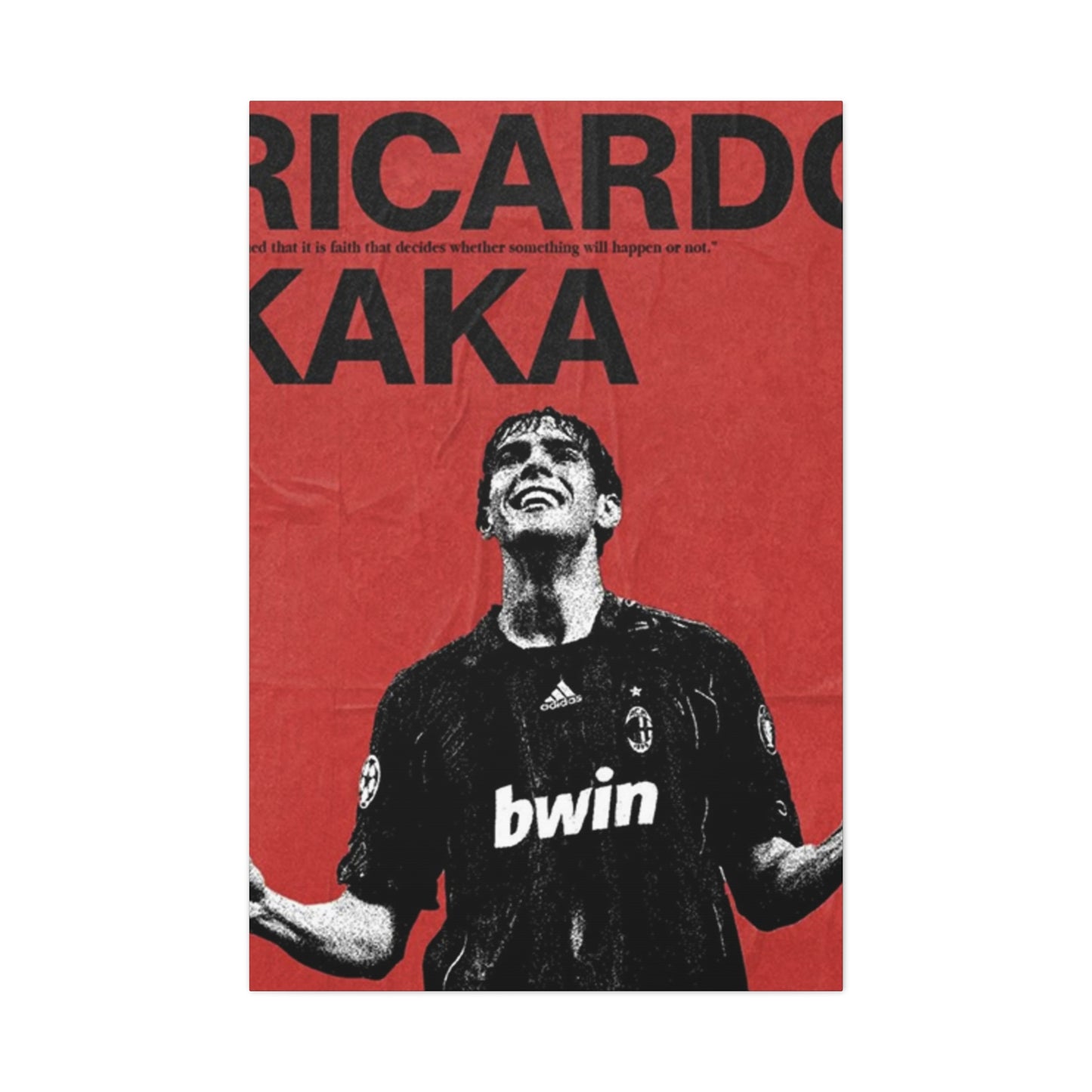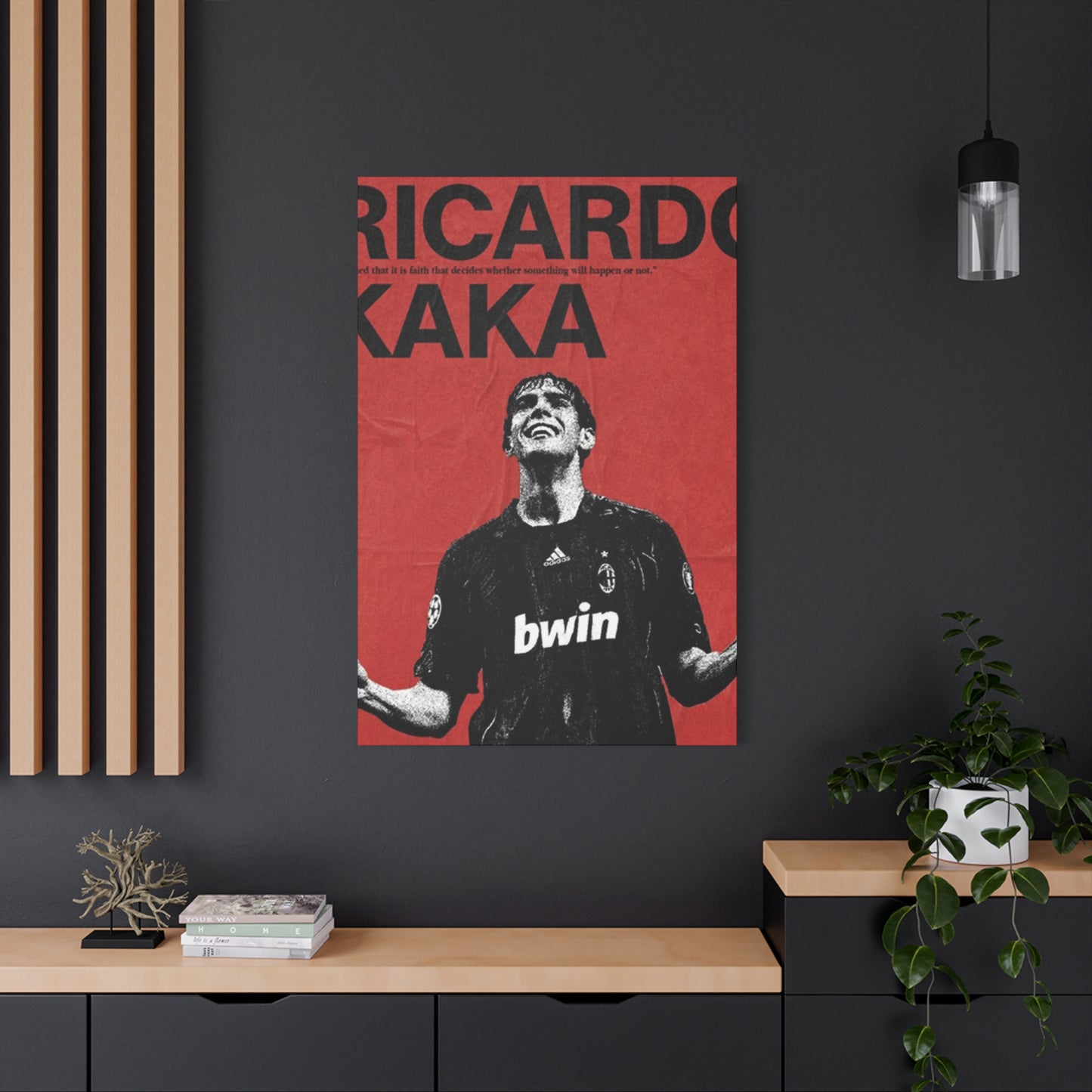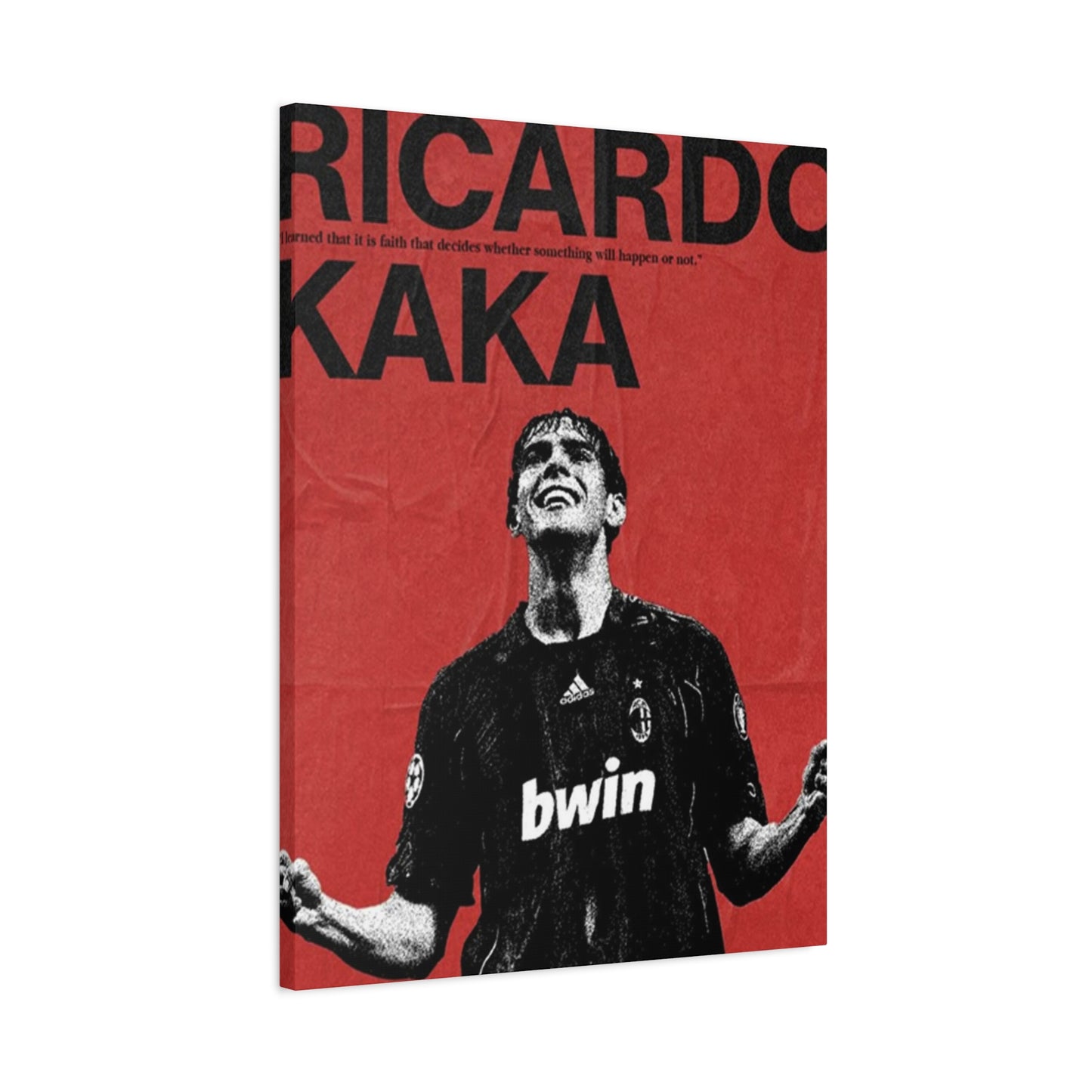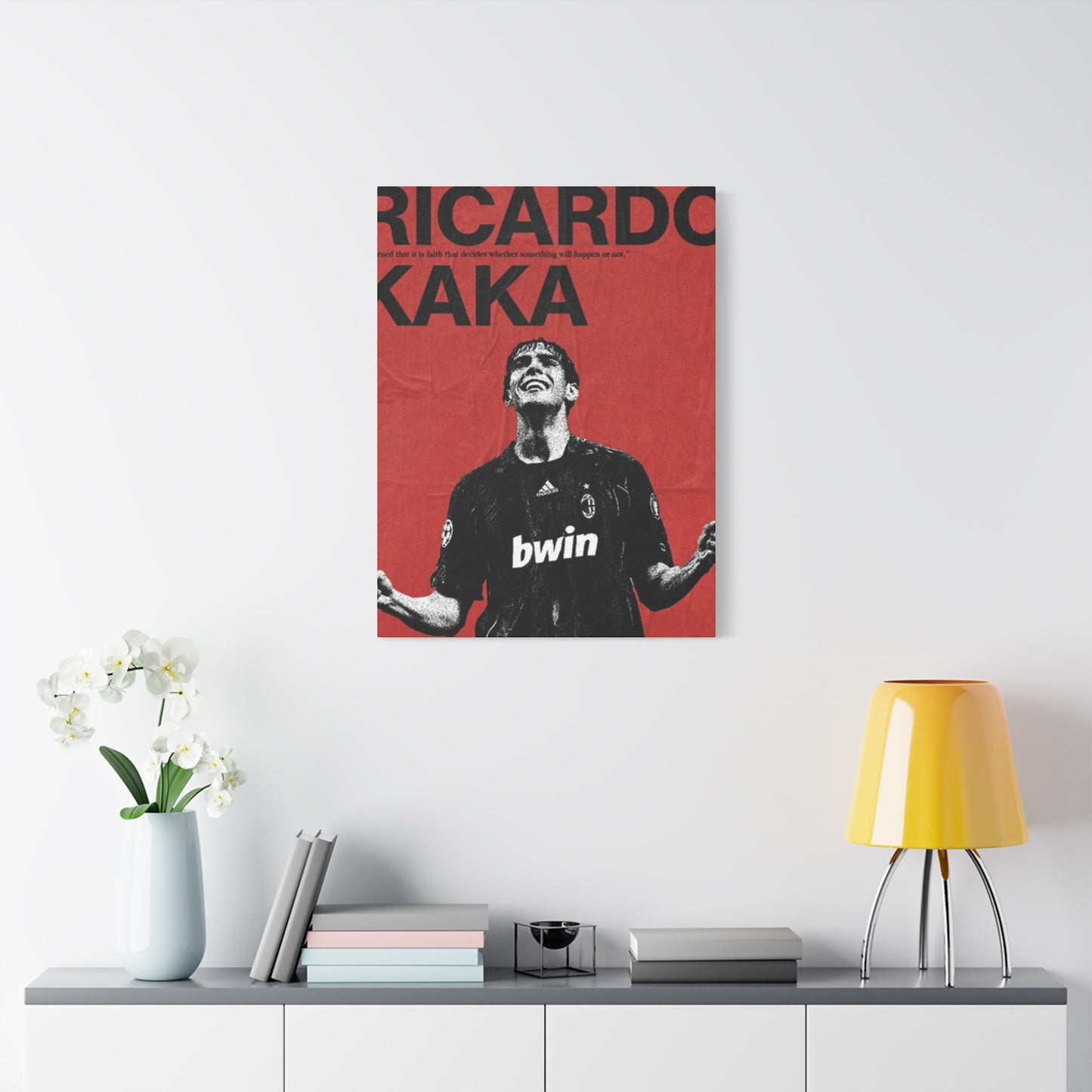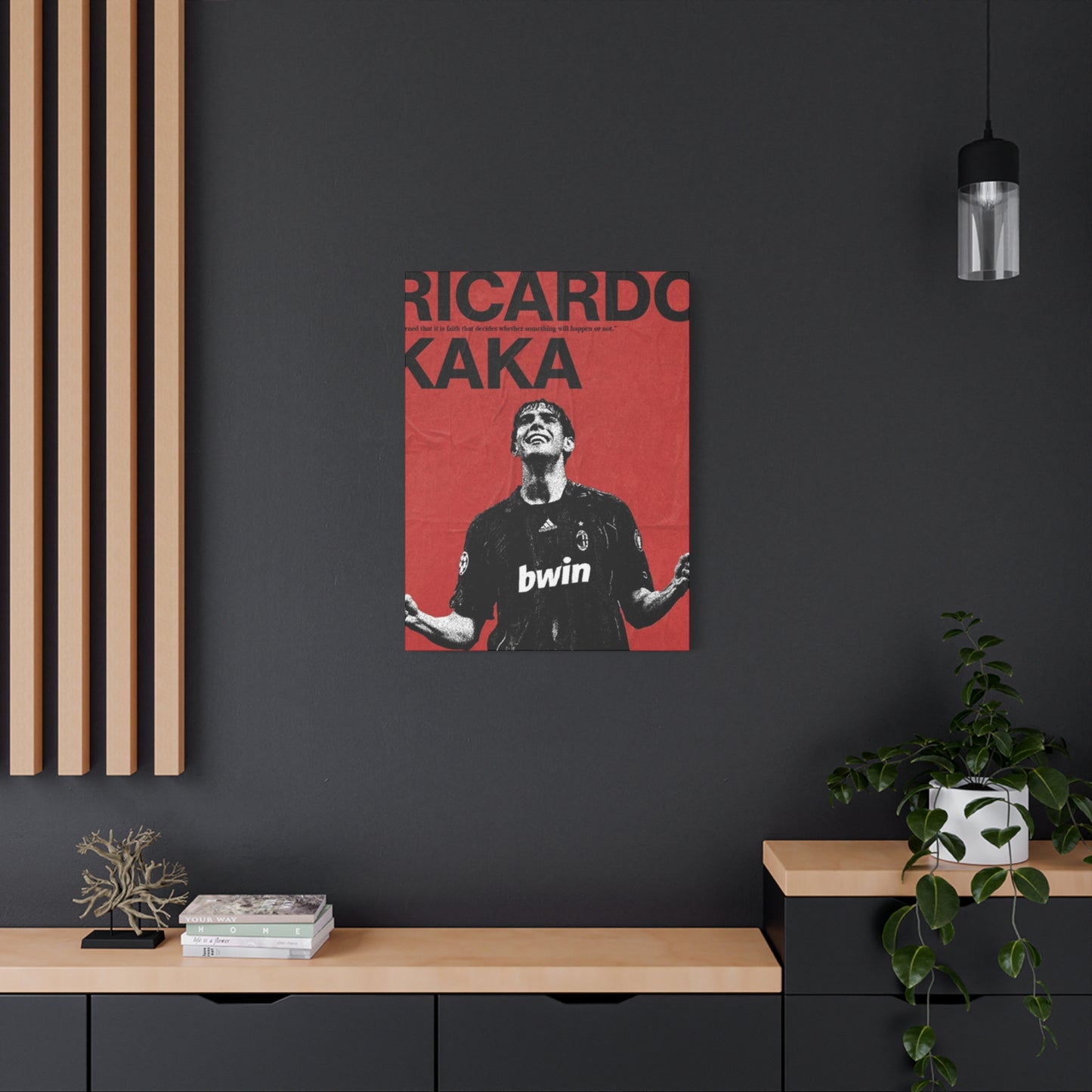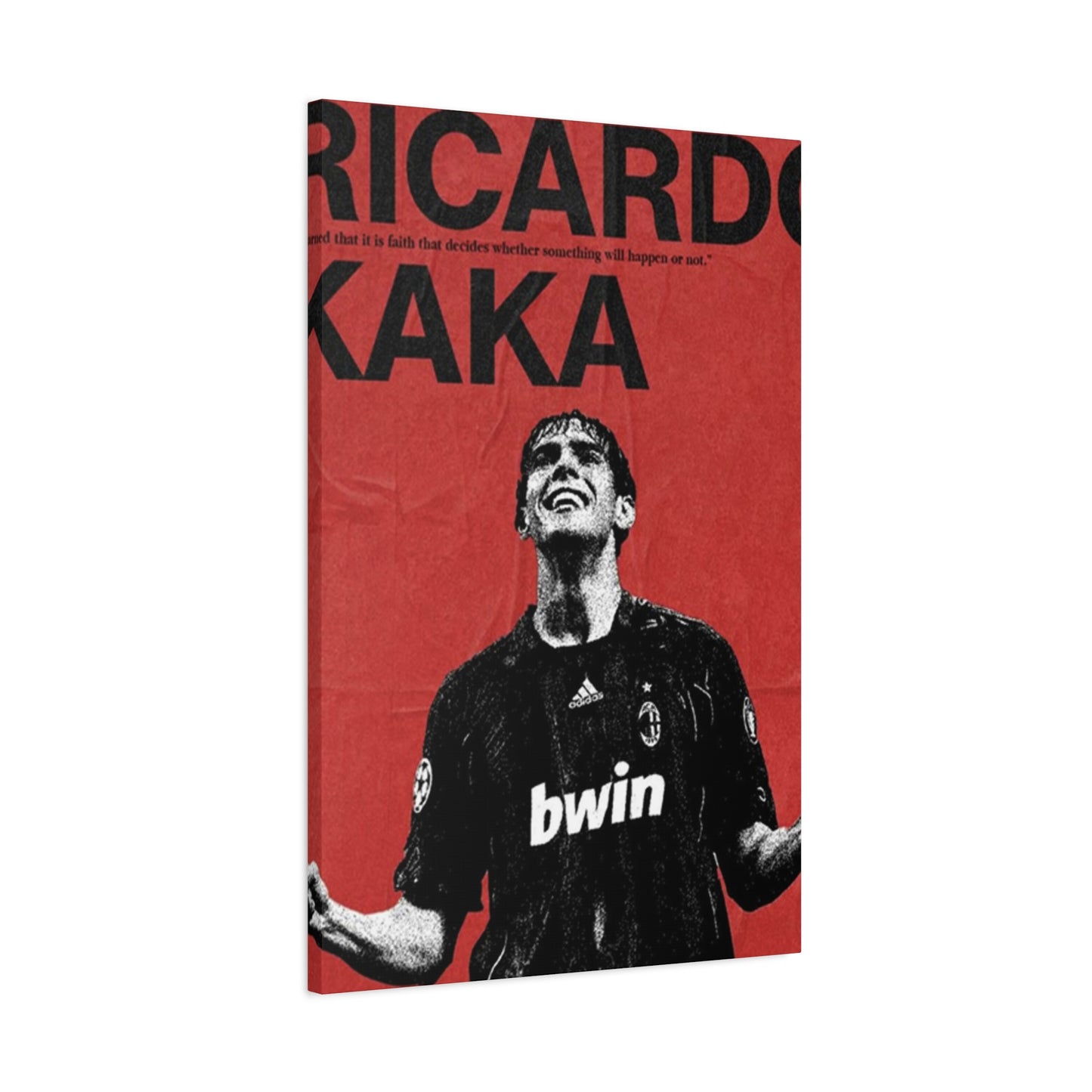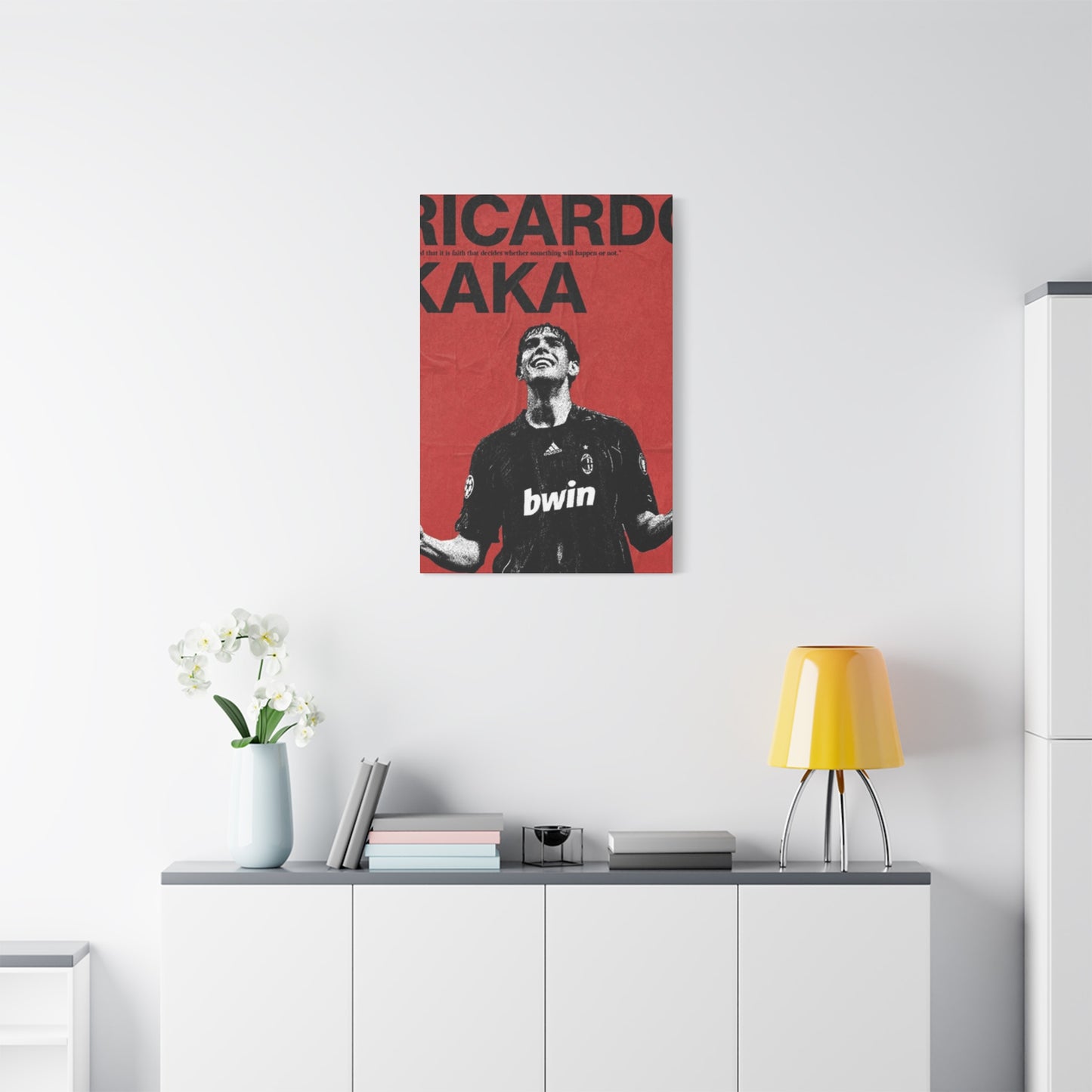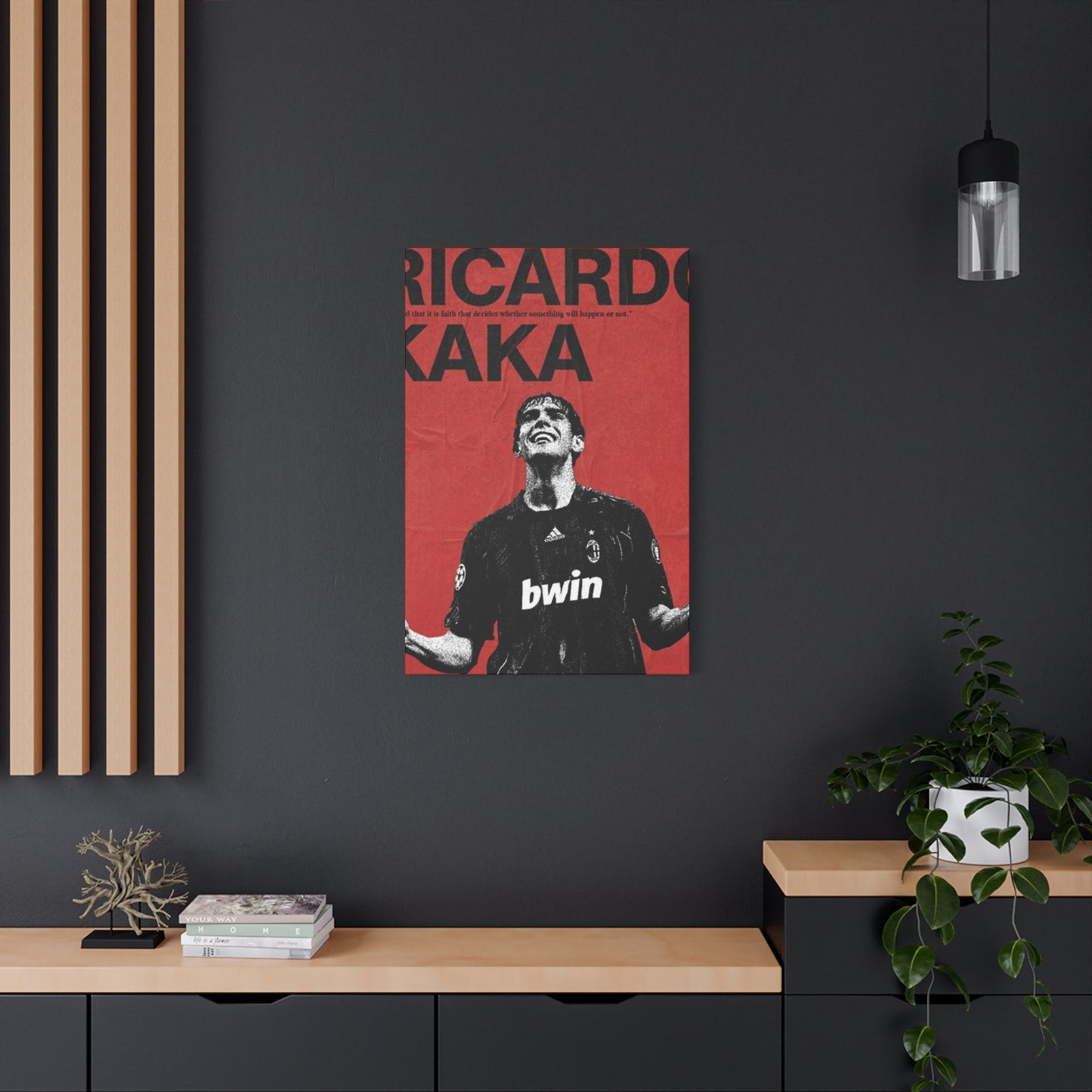Ricardo Kaka Wall Art: The Ultimate Guide to Honoring the Brazilian Football Icon Visuals
The passion for football transcends beyond the pitch, finding its expression in various forms of artistic celebration. For admirers of Ricardo Kaka, one of the most elegant and technically gifted players in football history, decorating living areas with visual tributes becomes a meaningful way to honor his legacy. These artistic representations serve as daily reminders of the Brazilian maestro's extraordinary career, from his mesmerizing dribbles to his unforgettable goals that left audiences worldwide in awe.
Football enthusiasts who followed Kaka's journey from Sao Paulo to European glory understand the emotional connection that develops between fans and their heroes. Displaying artistic tributes featuring this legendary midfielder creates an atmosphere that reflects personal dedication to the beautiful game. These pieces become conversation starters, allowing fans to share memories of crucial Champions League finals, breathtaking solo runs, and moments of pure footballing brilliance that defined an era.
The variety available for supporters includes numerous styles and formats, each capturing different aspects of Kaka's illustrious career. From dynamic action photographs frozen in time to stylized illustrations emphasizing his grace on the field, collectors can choose pieces that resonate with their personal memories of watching him play. The emotional impact of seeing his iconic number 22 or witnessing his characteristic celebration arms raised toward the heavens brings immediate recognition and nostalgia.
Creating a dedicated area featuring these visual tributes transforms ordinary rooms into shrines celebrating football excellence. Whether arranging multiple pieces together or selecting a single statement artwork, fans curate personal galleries reflecting their admiration. The placement of these items demonstrates commitment to preserving memories of a player who represented professionalism, skill, and humility throughout his remarkable career.
Many collectors seek pieces showcasing specific tournaments or seasons that hold particular significance. The 2007 Champions League campaign with AC Milan, the 2002 World Cup triumph with Brazil, or his phenomenal years at Real Madrid all provide rich material for artistic interpretation. Each period of his career offers distinct visual elements that artists capture through various mediums, allowing supporters to select works representing their favorite Kaka moments.
The quality of these visual tributes ranges from affordable prints suitable for casual fans to museum-quality pieces that serious collectors treasure. Understanding the difference in production methods, materials, and artistic approaches helps enthusiasts make informed decisions when building their collections. High-resolution imagery ensures that every detail from match-worn jerseys to the intensity in his eyes during crucial moments remains sharp and vibrant.
Minimalist Kaka Poster Ideas
The minimalist aesthetic has gained tremendous popularity in contemporary home decoration, offering clean lines and simplified compositions that create powerful visual impact without overwhelming viewers. Applying this artistic philosophy to depictions of Ricardo Kaka produces striking results that capture his essence through reduction rather than elaboration. These understated designs appeal to fans who appreciate subtle sophistication and prefer their admiration expressed through refined visual statements.
Simplicity in design does not mean lack of impact when executed properly. Artists employing minimalist approaches distill Kaka's image down to essential elements recognizable silhouettes, distinctive poses, or abstract representations of his playing style. Color palettes often feature limited selections, perhaps incorporating the yellow and blue of Brazil or the red and black stripes synonymous with AC Milan, creating immediate association without explicit detail.
Geometric interpretations offer another avenue for minimalist expression, where angular shapes and clean lines suggest movement and athleticism without photographic realism. These abstract approaches allow viewers to engage intellectually with the artwork, recognizing the subject through form and composition rather than literal representation. The negative space becomes as important as the positive elements, creating balance and visual breathing room.
Typography-based designs represent yet another minimalist direction, featuring Kaka's name, jersey number, or significant dates arranged in visually pleasing compositions. The choice of fonts, their size relationships, and strategic placement create hierarchy and emphasis while maintaining the pared-down aesthetic. Some designs incorporate subtle textures or gradients that add depth without compromising the overall simplicity.
Monochromatic schemes work exceptionally well within minimalist frameworks, utilizing variations of single colors to create dimension and focus. Black and white compositions offer timeless elegance, while explorations in grayscale provide nuanced tonal ranges that suggest depth and emotion. Occasionally, a single accent color draws attention to specific elements, such as highlighting the Brazilian crest or emphasizing his jersey number.
The versatility of minimalist designs makes them suitable for various settings, from modern apartments to professional offices where subtlety is preferred. These pieces complement contemporary furniture and architectural features without competing for attention. Their understated nature allows them to integrate seamlessly into existing aesthetic schemes while still making their presence known to those who recognize the subject matter.
Vintage Kaka Wall Prints
Nostalgia holds powerful sway over football fans, and vintage-styled prints tap into this emotional reservoir by evoking the aesthetic of earlier eras. These deliberately aged designs create the impression of historical artifacts, as if they were promotional materials from Kaka's playing days that have weathered time. The intentional distressing, faded colors, and retro typography transport viewers back to specific moments in football history.
The visual language of vintage design includes particular characteristics that immediately signal a different era. Sepia tones, muted color palettes, and grain or texture that mimics aged paper or worn photographs all contribute to the nostalgic atmosphere. Typography choices often reference styles popular during the 1970s through 1990s, with bold sans-serif fonts or decorative scripts that were prevalent in sports marketing materials of those periods.
Creating authentic-feeling vintage pieces requires understanding the visual conventions of different decades. Designs evoking the early 2000s when Kaka emerged as a global superstar might incorporate the graphic design trends of that era, including particular color combinations, layout approaches, and photographic treatments popular at the time. This attention to period-specific details ensures the vintage aesthetic feels genuine rather than generic.
Reproduction techniques play crucial roles in achieving convincing vintage appearances. Distressing methods that introduce strategic wear patterns, corner damage, or color fading must appear natural rather than artificial. The goal is creating pieces that look like treasured items preserved from earlier times, not brand-new products artificially aged. Skilled artists balance distressing effects to suggest history without obscuring important visual information.
Collectors particularly value vintage-style prints featuring iconic moments from Kaka's career presented as if they were contemporary promotional materials. Imagining alternate timelines where match posters, team advertisements, or fan club materials documented his greatest achievements adds layers of creative interest. These hypothetical historical documents blend fact and artistic license, creating unique conversation pieces that spark discussions about football history.
The appeal of vintage aesthetics extends across age groups, attracting both older fans who remember watching Kaka during his prime and younger supporters drawn to retro styling. This cross-generational attraction makes vintage prints excellent choices for shared family areas or gifts that bridge age differences. The timeless quality of well-executed vintage design ensures these pieces remain visually relevant even as contemporary trends evolve.
Iconic Kaka Moments in Art
Ricardo Kaka's career provided numerous unforgettable moments that artists have immortalized through various creative interpretations. These landmark occasions from spectacular goals to emotional celebrations represent peak experiences in football history deserving permanent visual commemoration. Capturing these moments requires artistic skill to convey not just what happened but the emotional electricity that made them extraordinary.
The 2007 Champions League final against Liverpool stands among the most significant matches in Kaka's career. Though AC Milan won the trophy with Kaka earning the Ballon d'Or later that year, the journey to that triumph included countless memorable sequences. Artists depicting this campaign capture the determination, skill, and leadership he displayed throughout that remarkable tournament, translating motion and emotion into static visual form.
His spectacular solo goal against Manchester United during the Champions League semifinals showcased the complete package of his abilities: pace, control, vision, and clinical finishing. Freezing this moment in artistic form requires capturing the explosive acceleration past defenders, the focused determination on his face, and the trajectory toward goal. Different artistic styles from photorealistic renderings to impressionistic interpretations each bring unique perspectives to this iconic sequence.
The 2002 World Cup victory with Brazil, though Kaka played a limited role, marked his introduction to the global football audience. Images from this tournament show a young player surrounded by legends like Ronaldo, Rivaldo, and Ronaldinho, eager and learning from the best. Artistic depictions of this period often emphasize youth and potential, capturing the beginning of what would become an extraordinary career.
His emotional celebrations, particularly the characteristic gesture of pointing skyward, reflect his deep religious faith and humility. These moments of spiritual expression resonate beyond football, touching viewers regardless of their personal beliefs. Artists capturing these celebrations face the challenge of conveying genuine emotion through facial expressions and body language, creating images that move viewers and communicate Kaka's character.
The final matches of his career, including his return to Sao Paulo and eventual retirement, provide poignant subject matter for artistic exploration. These bittersweet moments capture the transition from active player to legend, from present to history. Artistic interpretations of career endings often incorporate multiple temporal layers, suggesting both the immediate moment and the weight of everything that preceded it.
Career retrospective pieces bring together multiple moments in single compositions, creating visual narratives that tell complete stories. These ambitious artworks might juxtapose young Kaka in Brazilian youth colors against his AC Milan prime and Real Madrid tenure, creating dialogues across time. The artistic challenge involves creating cohesive compositions from disparate elements while maintaining visual clarity and emotional impact.
Kaka Wall Art for Teen Rooms
Adolescence represents a crucial period when young people develop personal identities and express themselves through their surroundings. For teenagers passionate about football, decorating their personal environments with images of their heroes becomes an important form of self-expression. Ricardo Kaka's combination of extraordinary talent and exemplary character makes him an ideal role model worth celebrating through visual tributes.
The aesthetic preferences of teenagers often differ from adults, favoring more vibrant colors, dynamic compositions, and contemporary styling. Artwork appealing to this demographic typically emphasizes action, energy, and attitude while avoiding anything that might appear old-fashioned or overly formal. Capturing Kaka in motion, executing signature moves, or celebrating goals provides the dynamism that resonates with younger audiences.
Educational elements can be subtly incorporated into these visual pieces, including career statistics, achievement timelines, or inspirational quotes that communicate values beyond football excellence. Teenagers absorbing messages about dedication, perseverance, and maintaining humility amid success benefit from having positive role models visually present in their daily environments. These implicit lessons make decorative choices potentially influential beyond mere aesthetic considerations.
Size considerations for teenage rooms require balance between making visual impact and respecting limited dimensions. Many adolescent bedrooms cannot accommodate massive installations, necessitating thoughtfully scaled pieces that command attention without overwhelming available area. Multiple smaller coordinated pieces often work better than single large items, allowing for flexible arrangement and easier future updates as tastes evolve.
The social aspects of teenage life mean that rooms often host friends who will see and potentially comment on decorative choices. Having conversation-worthy artwork featuring a respected football legend provides positive talking points and helps establish the room owner's identity within their peer group. These social dynamics make the selection of appropriate artistic representations particularly important for this age group.
Durability becomes a practical consideration given the higher activity levels typical in teenage environments. Materials that resist damage, maintain appearance despite less-than-careful handling, and allow for easy cleaning ensure that investments in decorative artwork remain worthwhile. Practical concerns need not compromise aesthetic quality when appropriate materials and protective measures are employed.
Encouraging teenagers to participate in selecting and arranging their decorative artwork fosters decision-making skills and personal investment in their environments. Guiding them toward quality pieces featuring appropriate role models like Kaka combines allowing personal expression with ensuring choices they will continue appreciating as they mature. This collaborative approach makes the decoration process itself valuable beyond the final visual results.
Canvas Prints of Ricardo Kaka
Canvas prints represent one of the most popular and versatile formats for displaying photographic and artistic images. The texture of canvas material adds depth and richness that standard paper prints cannot match, while the absence of reflective glass allows viewing from multiple angles without glare concerns. For Ricardo Kaka imagery, canvas printing creates museum-quality presentations suitable for prominent display.
The technical process of canvas printing has advanced significantly, with modern printers capable of reproducing images with exceptional color accuracy and detail retention. High-resolution source files ensure that even large-format prints maintain sharpness across the entire surface. The slight texture of canvas material can actually enhance certain images, adding a painterly quality that makes photographic images appear more artistic.
Gallery wrapping techniques where canvas extends around frame edges and is stapled to the back create finished pieces that require no additional framing. This approach produces clean, contemporary presentations that work well in modern settings. The depth of the stretcher bars underlying the canvas adds dimensionality, making these pieces sculptural objects rather than flat images. Various depth options from thin to thick profiles allow customization based on aesthetic preferences.
Color treatment options significantly impact the final appearance of canvas prints. Some pieces benefit from faithful color reproduction maintaining the accuracy of original photographs, while others gain impact from enhanced saturation or creative color grading. Black and white conversions can emphasize composition and contrast, focusing attention on form and emotion rather than color. Artists and printers working together determine appropriate treatments for each specific image.
Protective coatings applied to finished canvas prints serve multiple purposes, from protecting against UV damage that can fade colors over time to adding moisture resistance and making surfaces easier to clean. Matte coatings preserve the natural canvas texture, while satin finishes add subtle luster without the high shine of glossy treatments. These protective measures ensure that properly maintained canvas prints remain vibrant for many years.
The sizing flexibility of canvas printing accommodates everything from modest pieces suitable for compact areas to massive installations that dominate entire portions of rooms. Creating compelling displays often involves considering the viewing distance and surrounding architectural features. Larger pieces make dramatic statements but require sufficient viewing distance for proper appreciation, while smaller formats work well in intimate settings or as parts of gallery-style groupings.
Custom canvas printing services allow fans to create personalized pieces using their own photographs or selecting from extensive image libraries. This flexibility means collectors can obtain exactly the representations they desire rather than settling for whatever happens to be commercially available. The ability to customize sizes, treatments, and framing options ensures that each piece perfectly suits its intended setting.
Kaka Art for Game Rooms
Game rooms, entertainment areas, and home theaters provide excellent opportunities for displaying sports-related artwork. These locations dedicated to leisure activities naturally accommodate football tributes more readily than formal living areas might. Ricardo Kaka imagery complements the recreational atmosphere while adding visual interest and personality to what might otherwise remain purely functional entertainment zones.
The typical characteristics of game rooms including casual furniture, gaming equipment, and often darker color schemes for optimal screen viewing create specific considerations for artwork selection. Pieces must hold visual interest without creating distracting reflections on television or monitor screens. Bold compositions with strong contrast work particularly well, maintaining visibility even in the lower lighting conditions often preferred for gaming and movie watching.
Thematic coherence across multiple pieces creates polished, intentional appearances rather than random collections of unrelated items. Dedicating an entire game room to football themes with Kaka as the centerpiece establishes clear identity for the location. Additional pieces might include other football legends, team logos, stadium photographs, or abstract representations of the sport, all working together to create immersive sports-centric environments.
The social functions of game rooms where friends gather for gaming sessions, watching matches, or casual hangouts make these locations natural stages for displaying personal interests. Artwork becomes part of the ambient experience, subtly communicating the owner's values and interests while providing visual stimulation during breaks in activity. Well-chosen pieces contribute to the overall atmosphere without demanding constant attention.
Lighting considerations significantly impact how artwork appears in game room settings. Installing dedicated picture lighting or adjustable ambient illumination ensures that pieces remain visible and properly presented regardless of primary lighting configurations needed for various activities. The flexibility to highlight artwork when desired while dimming during screen-focused activities provides optimal functionality.
Interactive elements can enhance game room artwork beyond purely visual presentation. Some collectors incorporate LED lighting effects, motion-triggered illumination, or even audio components that play memorable goal calls or crowd reactions when viewers approach. These technological integrations transform static displays into engaging experiences, particularly appealing in settings dedicated to entertainment and interactivity.
The relaxed atmosphere of game rooms permits more experimental or playful approaches to sports artwork. Irreverent humor, creative mashups, or unconventional artistic styles that might seem inappropriate in formal settings work perfectly in recreational contexts. This freedom allows collectors to explore diverse creative expressions while maintaining the underlying tribute to Kaka and his accomplishments.
Custom Kaka Wall Murals
Large-scale murals represent the ultimate commitment to celebrating Ricardo Kaka through visual art, transforming entire portions of rooms into immersive tributes. These ambitious installations require careful planning, professional execution, and significant investment but deliver unmatched visual impact. Custom murals can depict anything from photorealistic portraits to stylized interpretations spanning floor to ceiling.
The design process for custom murals begins with establishing objectives and constraints. Available dimensions, architectural features like windows or doors, existing color schemes, and desired emotional tone all influence design decisions. Collaborating with experienced mural artists ensures that concepts translate effectively to large scale, where compositional elements must be balanced differently than in smaller formats.
Photorealistic murals that recreate famous photographs or match moments at life-size or larger create stunning immediate impact. Viewers experience the sensation of presence, as if sharing the same physical environment with the depicted subject. The technical challenge of maintaining image quality across such large dimensions requires extremely high-resolution source material and specialized printing or painting techniques.
Stylized murals employing illustration, graphic design, or street art aesthetics offer alternative approaches that emphasize artistic interpretation over photographic accuracy. These creative treatments can incorporate elements impossible in realistic renderings, such as impossible perspectives, symbolic additions, or graphic elements that enhance storytelling. The artistic license inherent in stylized approaches allows for highly personalized unique creations.
Installation methods for murals vary based on materials and intended permanence. Removable vinyl applications allow for future changes without permanent modifications to underlying surfaces, appealing to renters or those anticipating eventual redesigns. Traditional painted murals become permanent fixtures requiring significant effort to remove or cover, representing deeper commitments but also potentially greater artistic achievement through hand-crafted execution.
Lighting design becomes crucial for large murals, as uniform illumination across substantial dimensions prevents dark zones or hotspots that diminish visual impact. Some installations incorporate integrated lighting solutions that become part of the overall design, using strategic illumination to emphasize specific elements or create dramatic effects. The interplay between artwork and lighting transforms throughout daily cycles as natural light conditions change.
Maintenance considerations for large murals include cleaning requirements, durability expectations, and potential need for touch-ups over time. Materials selected during creation significantly impact long-term maintenance demands, with some finishes resisting dirt and damage better than others. Understanding these practical aspects before committing to specific approaches ensures realistic expectations about ongoing care requirements.
Kaka in Brazil Jersey Wall Art
National team imagery carries special significance for football fans, representing not just individual players but entire nations and their footballing traditions. Ricardo Kaka wearing the famous yellow and blue of Brazil evokes powerful associations with the country's rich football heritage and countless legendary players who wore those same colors. These patriotic representations celebrate both individual excellence and collective national identity.
The visual impact of Brazil's distinctive color scheme provides immediate recognition and creates vibrant, eye-catching artwork. The bright canary yellow contrasts beautifully with royal blue and green accents, producing color combinations that work well across various decorative contexts. Artists working with these colors benefit from their inherent vibrancy while facing challenges in maintaining color accuracy and avoiding oversaturation.
Specific tournaments and matches provide context for Brazil jersey imagery. Kaka's performances during World Cup qualifying campaigns, Copa America tournaments, and the Confederations Cup victory in 2009 where he earned the Golden Ball award all offer rich material for artistic exploration. Depicting him in match-specific contexts adds layers of meaning beyond generic national team representations.
The evolution of Brazil's jersey designs throughout Kaka's international career provides interesting visual variety. Subtle variations in collar styles, sponsor placements, and design details mark different eras, allowing collectors to select pieces representing specific periods. Some fans prefer classic designs from earlier in his career, while others favor later versions, each choice reflecting personal connections to particular moments.
Combining Kaka imagery with Brazilian national symbols like the flag, the Cristo Redentor statue, or abstract representations of Brazilian culture creates compositions that extend beyond football into broader cultural celebration. These expanded contextual elements appeal to viewers interested in Brazil generally, not just football specifically, widening the potential audience for such artwork.
The emotional resonance of national team imagery often exceeds that of club representations because international football carries additional layers of identity and belonging. For Brazilian supporters, seeing Kaka in national colors triggers pride in both the player and the country. For international fans, these images represent admiration for Brazilian football culture and its endless production of extraordinary talent.
Documentary-style photographic approaches that capture behind-the-scenes moments anthem singing, team huddles, emotional exchanges with teammates reveal humanizing glimpses beyond match action. These intimate perspectives show Kaka as part of something larger than himself, contributing to collective efforts rather than performing as an isolated individual. Such images communicate values of teamwork, dedication, and national pride that resonate beyond sports.
Kaka and AC Milan Art Pieces
Ricardo Kaka's time with AC Milan from 2003 to 2009 represented the pinnacle of his club career, featuring Champions League glory, Serie A triumphs, and individual accolades including the prestigious Ballon d'Or. The connection between player and club became iconic, making AC Milan imagery particularly meaningful for fans remembering this golden era. The Rossoneri's distinctive red and black stripes provide instantly recognizable visual elements that artists incorporate into countless creative compositions.
The historical weight of AC Milan as one of football's most successful and storied clubs adds gravitas to artwork featuring Kaka in their colors. Playing alongside legends like Paolo Maldini, Andrea Pirlo, and Clarence Seedorf at the San Siro stadium places Kaka within a lineage of greatness. Artistic pieces capturing this context communicate not just individual achievement but participation in something historically significant.
The 2007 Champions League campaign stands as the defining chapter of Kaka's Milan career, with his performances throughout the tournament earning universal acclaim. Artists depicting this period often incorporate the trophy itself, the distinctive Champions League starball logo, or scenes from crucial matches including the semifinals against Manchester United and the final against Liverpool. These visual elements immediately transport viewers to those momentous occasions.
Derby della Madonnina matches against local rivals Inter Milan provided intense competitive environments where Kaka regularly delivered memorable performances. The unique atmosphere of Milan derbies, with the city divided in passionate support, creates dramatic backdrops for artistic interpretation. Capturing the intensity of these encounters requires artistic approaches that convey emotion, pressure, and the electricity of cross-town rivalry.
The San Siro stadium itself becomes a character in many artistic compositions, with its distinctive spiral ramps and towering stands forming recognizable architectural elements. Depicting Kaka performing against this iconic backdrop situates his achievements within their proper geographical and cultural context. Stadium imagery helps viewers who experienced matches there remember the complete sensory experience, not just isolated athletic moments.
Collaboration pieces showing Kaka interacting with teammates passing to Pirlo, celebrating with Inzaghi, or receiving tactical instructions from coaches tell stories beyond individual brilliance. Football succeeds through collective effort, and artwork acknowledging this reality provides more complete historical documentation. These interpersonal moments humanize players and illustrate the relationships that contributed to team success.
Departure scenes from Kaka's transfer to Real Madrid in 2009 provide poignant subject matter, capturing the bittersweet emotions of a beloved player leaving for new challenges. Some fans prefer avoiding this sorrowful chapter, while others find meaning in acknowledging the complete narrative arc. Artistic interpretations of endings, when handled sensitively, can achieve emotional depth that pure celebration sometimes lacks.
Framed Kaka Portraits
Traditional portrait photography and painting have celebrated remarkable individuals throughout human history, and football legends deserve similar artistic treatment. Formal portraits of Ricardo Kaka ranging from photographic headshots to classical painted interpretations provide dignified tributes emphasizing character and personality rather than athletic action. These contemplative representations offer different perspectives on a figure primarily known for dynamic movement.
Portrait photography requires specific technical skills and artistic vision to reveal subject personality through facial expressions, lighting choices, and compositional decisions. The best portraits transcend simple documentation, capturing something essential about the subject that resonates with viewers. Photographs revealing Kaka's intelligence, warmth, and spiritual depth create intimate connections between subject and audience.
Classical painting techniques applied to football subjects create interesting juxtapositions between historical artistic traditions and contemporary sports culture. Imagining Kaka rendered in styles reminiscent of Renaissance masters or Baroque portraiture produces thought-provoking results that question boundaries between high art and popular culture. These experimental approaches appeal to audiences interested in art history and conceptual exploration.
Black and white portraiture eliminates color as a potential distraction, focusing attention entirely on composition, lighting, and subject. The timeless quality of monochrome imagery helps portraits transcend their immediate temporal contexts, taking on archival or historical characteristics. Dramatic lighting schemes employing chiaroscuro techniques create sculptural dimensionality through careful manipulation of light and shadow.
Expression and body language communicate vast amounts of nonverbal information in portrait photography. Capturing Kaka's characteristic humility and gentle nature requires understanding his personality beyond public performances. The best portraits seem to reveal private moments of reflection rather than public presentations, creating feelings of privileged access to the subject's inner life.
Framing choices significantly impact how portraits are perceived, with traditional approaches employing substantial wooden frames that add formality and presence. Materials like gilded edges or ornate carved details create museum-quality presentations suitable for prominent display. Alternatively, minimalist metal frames or simple wooden profiles maintain focus on the image itself without additional decorative elements competing for attention.
Placement of framed portraits requires consideration of viewing angles, lighting conditions, and surrounding decorative elements. Eye-level positioning allows direct visual engagement with the subject, creating more intimate viewing experiences. Isolated placement against neutral backgrounds emphasizes the portrait's importance, while incorporation into gallery arrangements creates dialogues between multiple pieces.
Kaka Quote Posters
Typography-focused designs featuring meaningful quotations offer another avenue for celebrating Ricardo Kaka while emphasizing the wisdom and values he represents. His public statements often reflect his religious faith, commitment to excellence, and philosophical approach to life both on and off the pitch. Presenting these words in visually compelling formats creates pieces that inspire and motivate viewers while honoring their source.
Selecting appropriate quotations requires research into Kaka's interviews, public appearances, and written communications. Statements about dedication, humility, teamwork, faith, or perseverance resonate beyond football contexts, offering universal lessons applicable to various life circumstances. The most effective quotes balance specificity about football with broader philosophical implications.
Typographic design transforms words into visual compositions where font selections, sizing relationships, spacing, and color choices all communicate meaning. Bold sans-serif fonts suggest strength and confidence, while script letterforms convey elegance and personal expression. Hierarchy established through size and weight differences guides viewer attention through the text, emphasizing particular words or phrases.
Combining typographic elements with subtle background imagery creates layered compositions where text and image support each other. Faded photographic backgrounds provide contextual information without overwhelming the primary textual message. Abstract patterns, geometric shapes, or textural elements add visual interest while maintaining readability of the featured quotation.
Inspirational messages work particularly well in locations where people seek motivation home offices, workout areas, or study environments benefit from positive reinforcement. Waking to quotations about dedication and excellence can subtly influence daily attitudes and behaviors. The presence of words from respected figures creates psychological associations between viewers and those admirable qualities.
The international nature of football means that quotations might originate in Portuguese, requiring either translation or inclusion of original language alongside English versions. Bilingual presentations acknowledge linguistic authenticity while ensuring accessibility to broader audiences. The visual interest of Portuguese text adds exotic appeal even for viewers who cannot read it directly.
Custom quotation posters allow fans to feature statements that personally resonate with them, whether widely known public quotations or obscure interview excerpts they discovered through research. Personalization creates unique pieces unlikely to exist elsewhere, adding exclusivity and special meaning. Working with designers to create custom typographic treatments ensures professional results that honor both the words and their speaker.
Black & White Kaka Wall Art
Monochromatic imagery possesses unique aesthetic qualities that differentiate it from color photography and art. Eliminating color information focuses attention on composition, contrast, texture, and form in ways that color sometimes obscures. Black and white representations of Ricardo Kaka emphasize the dramatic, timeless, and contemplative aspects of his career and character.
The conversion from color to black and white involves artistic decisions beyond simple desaturation. Skilled photographers and artists manipulate tonal ranges to achieve specific emotional effects, darkening skies for drama or lightening certain elements to draw attention. The zone system developed by Ansel Adams for landscape photography principles applies equally to sports photography when pursuing maximum expressive impact.
High contrast black and white imagery featuring pure blacks and bright whites with minimal midtones creates graphic, bold compositions that command immediate attention. This approach works particularly well for action photography where simplified tonal ranges emphasize movement and athletic dynamism. The stark contrast mirrors the intensity and drama inherent in competitive football.
Alternatively, full tonal range black and white imagery displaying rich gradations from deepest blacks through multiple gray shades to brightest whites achieves subtle sophistication. This approach reveals nuanced details and creates atmospheric depth that can appear almost three-dimensional. The technical challenge involves maintaining detail in both shadow and highlight areas without losing information at either extreme.
Vintage-inspired black and white treatments incorporating grain, vignetting, or subtle toning create nostalgic atmospheres that suggest historical documentation. These period effects transform contemporary photographs into artifacts that appear to originate from earlier eras, lending gravitas and historical weight. The careful application of aging effects distinguishes artful design from simple filters applied indiscriminately.
Black and white imagery integrates easily into diverse decorative schemes because the absence of color prevents clashing with existing color palettes. These versatile pieces complement both bold, colorful surroundings and minimalist monochromatic environments. The neutral palette ensures long-term relevance despite evolving color trends and changing decorative preferences.
Emotional impact often intensifies in black and white imagery because viewers project feelings onto the neutral palette rather than having emotional responses predetermined by color associations. This psychological phenomenon allows monochromatic images to achieve profound effects through simplicity and restraint. The interpretive openness invites deeper engagement as viewers bring personal associations to the viewing experience.
Kaka Wall Art for Offices
Professional office environments require careful consideration of appropriate decorative elements that maintain workplace dignity while expressing personal interests. Ricardo Kaka's reputation for professionalism, discipline, and ethical conduct makes him an ideal subject for office artwork. These pieces demonstrate personal passions while communicating values aligned with business excellence.
Subtle, sophisticated artistic approaches work best in professional contexts where overt fanhood might seem inappropriate. Minimalist designs, monochromatic imagery, or abstract representations signal appreciation without overwhelming corporate aesthetics. The goal involves balancing personal expression with maintaining professional appearance and respecting workplace culture.
Motivational aspects of sports imagery provide legitimate business justification for including such artwork in professional settings. Kaka's dedication, strategic thinking, and performance under pressure all exemplify qualities valuable in business contexts. Artwork serving as visual reminders of these principles becomes functionally inspirational rather than purely decorative indulgence.
Size considerations in office environments typically favor moderate dimensions that assert presence without dominating available area or overwhelming professional furniture. Artwork should enhance rather than define office character, complementing rather than competing with the primary functions of the surroundings. Appropriately scaled pieces maintain professional proportions while still making meaningful visual statements.
Client-facing offices require particular attention to artwork selections since decorative choices implicitly communicate business values and personality. Artwork featuring respected international sports figures demonstrates cultural awareness and appreciation for global excellence. The universal appeal of football provides common ground for potential international business connections.
Private offices allow more personal expression than common areas, permitting slightly bolder choices that reflect individual passions. However, even personal offices benefit from thoughtful curation rather than overwhelming displays. One or two well-selected, beautifully presented pieces achieve greater impact than numerous items creating cluttered impressions.
The conversational value of office artwork should not be underestimated, as discussing shared interests helps establish rapport in professional relationships. Artwork featuring Ricardo Kaka provides starting points for conversations about sports, dedication, international experience, or even Brazilian culture. These informal connections often strengthen professional relationships beyond purely transactional interactions.
Digital Art of Ricardo Kaka
Digital art techniques have revolutionized visual creativity, enabling artistic approaches impossible through traditional mediums. Digital artists interpreting Ricardo Kaka employ software tools to create everything from photorealistic digital paintings to wildly experimental compositions that push aesthetic boundaries. This contemporary medium attracts younger artists and audiences comfortable with technology-driven creative processes.
Digital painting techniques using pressure-sensitive tablets and sophisticated software replicate traditional painting approaches while offering unique advantages. Infinite undo capabilities, layer-based workflows, and adjustment tools allow experimentation without risk of irreversibly damaging work. Artists can try multiple variations, comparing options before committing to final versions. The digital medium accommodates iterative creative processes more easily than physical materials.
Photo manipulation and compositing bring together disparate elements into unified compositions that would be impossible to photograph directly. Digital artists might place Kaka in fantasy environments, combine images from different matches into single scenes, or add impossible elements that serve symbolic or narrative purposes. These imaginative approaches expand creative possibilities beyond documentation into pure artistic invention.
Vector illustration creates artwork from mathematical curves rather than pixels, allowing infinite scaling without quality loss. This technical characteristic makes vector art ideal for applications requiring multiple sizes logos, graphics needing reproduction at various dimensions, or designs intended for everything from small prints to massive installations. The clean, precise aesthetic of vector work appeals to audiences favoring graphic design approaches.
3D rendering techniques create fully dimensional digital models that can be lit, textured, and rendered from any angle. Though labor-intensive to produce, 3D artwork offers unmatched flexibility once models exist. Artists can generate multiple compositions from single models, experimenting with endless lighting scenarios, camera angles, and environmental settings. The hyperrealistic results often blur lines between digital creation and photography.
Stylization filters and AI-assisted tools enable rapid creation of artwork in specific aesthetic styles. An artist might transform a photograph into impressionist painting, anime illustration, or abstract expressionist composition through algorithmic processing. While purists debate whether such tool-assisted creation qualifies as true art, the results can be visually compelling regardless of philosophical positions about creative legitimacy.
Animated digital art introduces temporal dimensions impossible in static mediums. Looping animations showing Kaka executing signature moves, celebrations, or simply breathing life into still portraits create mesmerizing effects suitable for digital display devices. These moving images demand attention in ways that static artwork cannot, though they require specific presentation technologies like digital screens or projection systems.
Kaka Action Shot Posters
Dynamic action photography capturing athletes at peak performance moments represents some of the most thrilling sports imagery. Ricardo Kaka in full stride, striking the ball, or executing skillful moves demonstrates the physical excellence that made him extraordinary. These frozen instants preserve ephemeral moments of athletic beauty that existed for fractions of seconds before dissolving back into continuous motion.
Technical challenges in action photography include freezing movement with fast shutter speeds while maintaining proper exposure and focus on rapidly moving subjects. Professional sports photographers employ specialized equipment and considerable expertise to consistently capture decisive moments. The best action shots demonstrate not just technical proficiency but artistic vision in recognizing and capturing meaningful moments.
Composition in action photography must balance multiple considerations: keeping the subject properly positioned within the frame, capturing relevant context while avoiding distracting elements, and creating dynamic visual movement despite the image being static. Leading lines formed by body positions, gazes, or trajectory paths guide viewer attention through compositions while suggesting the action's direction and energy.
Peak action moments when movements reach their apex often create the most visually striking images. Kaka fully extended while shooting, at maximum height during jumping headers, or balanced on one foot while the other strikes the ball all represent physiologically extreme positions that emphasize athletic capability. These exaggerated poses showcase strength, flexibility, and coordination in ways that normal standing positions cannot.
Background elements in action photography provide crucial context, grounding athletic performances in specific environments. Blurred stadium crowds suggest the competitive atmosphere, visible opponents emphasize the contested nature of achievements, and stadium architecture establishes geographical location. Selective focus that keeps subjects sharp while softening backgrounds creates depth and visual hierarchy that directs attention appropriately.
Conclusion
Ricardo Kaka remains one of football’s most revered icons, and honoring his legacy through wall art is a powerful way to celebrate his extraordinary career and influence. From his elegant playing style to his charismatic leadership on and off the pitch, Kaka embodies the spirit of Brazilian football—grace, passion, and excellence. Creating or curating wall art dedicated to this legendary midfielder does more than just decorate a space; it immortalizes a moment in football history and connects fans to the magic that Kaka brought to the beautiful game.
Wall art featuring Kaka offers a dynamic and visually compelling tribute that resonates with both die-hard football enthusiasts and casual admirers. Whether it’s a high-impact action shot capturing his signature dribble, a stylized portrait that highlights his thoughtful intensity, or an abstract representation of his energy and movement, these artworks capture the essence of what made Kaka a global football phenomenon. Through different artistic styles—from photorealism and pop art to digital illustrations—each piece offers a unique way to experience and celebrate his contributions to the sport.
Moreover, Kaka wall art serves as an inspiration in everyday spaces. Whether hung in a home office, living room, sports bar, or gym, these pieces elevate the environment by reminding viewers of the dedication, discipline, and creativity required to reach the pinnacle of sport. For younger fans, it can spark dreams of greatness; for older fans, it rekindles memories of unforgettable matches and moments. In this way, the artwork transcends mere aesthetics and becomes a source of motivation and nostalgia.
Another key aspect to consider when choosing Kaka wall art is its versatility. The range of styles and formats—from large canvases and framed posters to mural decals and mixed-media pieces—means there is an option suitable for any setting or personal taste. Collectors might favor limited-edition prints or artist-signed pieces that carry added value and exclusivity. Meanwhile, fans seeking a more accessible way to celebrate Kaka can find vibrant, affordable prints that bring color and energy to their walls.
The cultural significance of Ricardo Kaka extends beyond his technical skill and achievements. He represents the ideal of sportsmanship, humility, and community engagement. Wall art honoring Kaka often reflects these values, incorporating imagery that captures his humanitarian efforts and his role as a positive role model. This deeper layer of meaning enriches the artwork, offering more than just visual appeal—it becomes a celebration of character and impact.
Furthermore, investing in high-quality wall art dedicated to Kaka supports artists and creators who keep the spirit of football alive through their work. Many talented artists worldwide specialize in sports-themed art, blending passion for the game with artistic innovation. By choosing authentic and thoughtfully crafted pieces, collectors contribute to a thriving community that values creativity and athletic legacy alike.
In the digital age, the options for accessing and sharing Kaka-themed visuals have expanded dramatically. Digital prints, NFT collectibles, and augmented reality art are emerging trends that provide new ways to honor football legends. These technologies open exciting possibilities for interactivity and personalization, allowing fans to engage with Kaka’s legacy in innovative and immersive ways. Embracing these modern forms of expression ensures that Kaka’s influence continues to evolve with the times.
In conclusion, Ricardo Kaka wall art is more than just decorative—it is a tribute to a football legend whose impact transcends the field. By choosing to honor Kaka through visual art, fans and collectors alike create a lasting homage to a player who brought beauty, passion, and integrity to the sport. Whether displayed proudly in a personal space or showcased publicly, this artwork serves as a constant reminder of Kaka’s remarkable journey and the timeless inspiration he provides.

















